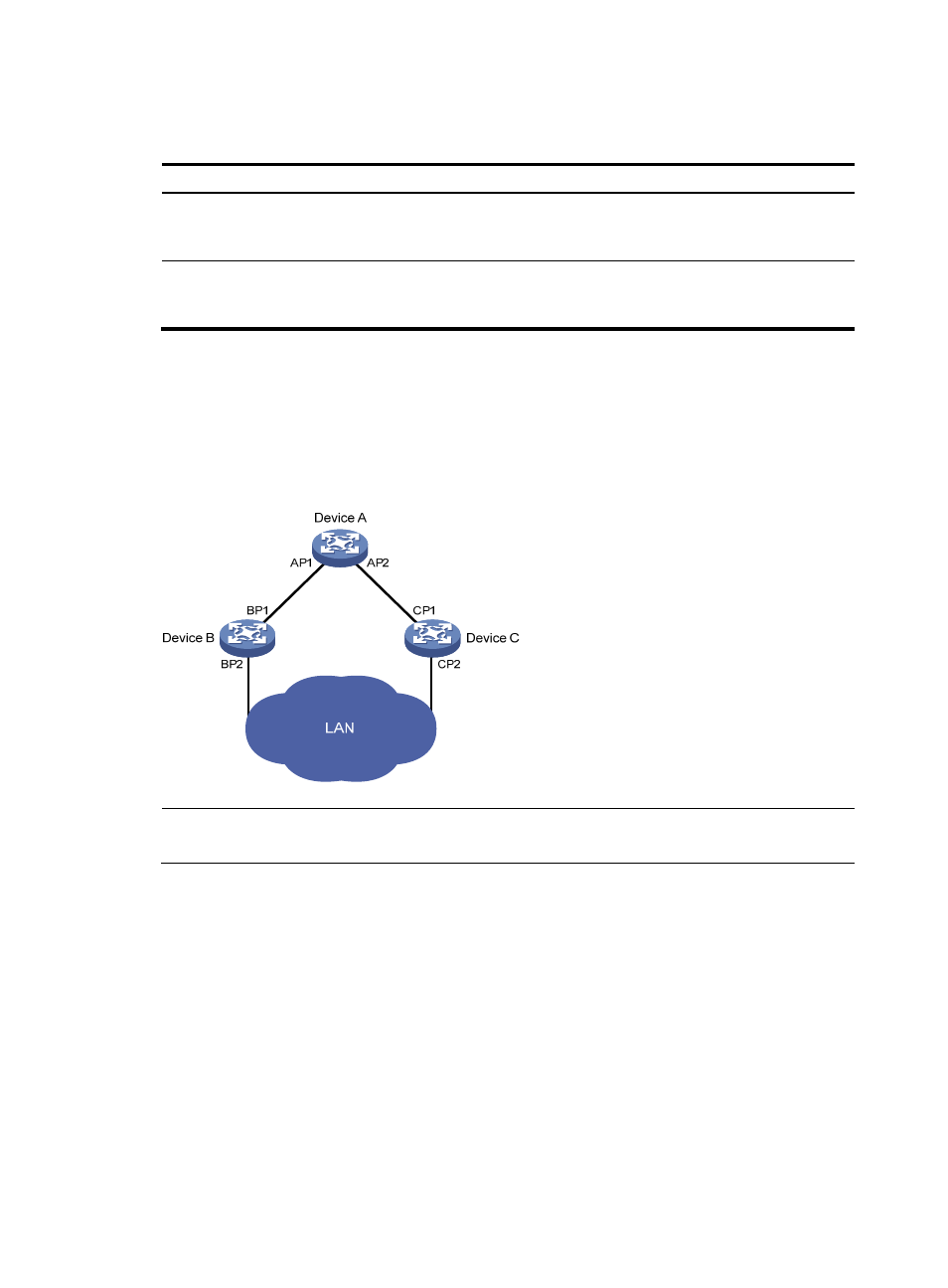Designated bridge and designated port, Path cost, How stp works – H3C Technologies H3C SecPath F1000-E User Manual
Page 82

57
Designated bridge and designated port
Table 9 Description of designated bridges and designated ports
Classification
Designated bridge
Designated port
For a device
A device directly connected to the local
device and responsible for forwarding
BPDUs to the local device.
The port through which the designated
bridge forwards BPDUs to this device.
For a LAN
The device responsible for forwarding
BPDUs to this LAN segment.
The port through which the designated
bridge forwards BPDUs to this LAN
segment.
As shown in
, Device B and Device C directly connected to a LAN.
•
If Device A forwards BPDUs to Device B through AP1, the designated bridge for Device B is Device
A, and the designated port of Device B is port AP1 on Device A.
•
If Device B forwards BPDUs to the LAN, the designated bridge for the LAN is Device B, and the
designated port for the LAN is the port BP2 on Device B.
Figure 39 Schematic diagram of designated bridges and designated ports
NOTE:
All the ports on the root bridge are designated ports.
Path cost
Path cost is a reference value used for link selection in STP. STP calculates path costs to select the most
robust links and blocks redundant links that are less robust, to prune the network into a loop-free tree.
How STP works
The devices on a network exchange BPDUs to identify the network topology. Configuration BPDUs
contain sufficient information for the network devices to complete spanning tree calculation. A
configuration BPDU includes the following important fields:
•
Root bridge ID—Consisting of the priority and MAC address of the root bridge.
•
Root path cost—The path cost to the root bridge.
•
Designated bridge ID—Consisting of the priority and MAC address of the designated bridge.